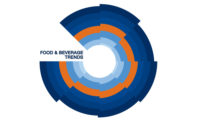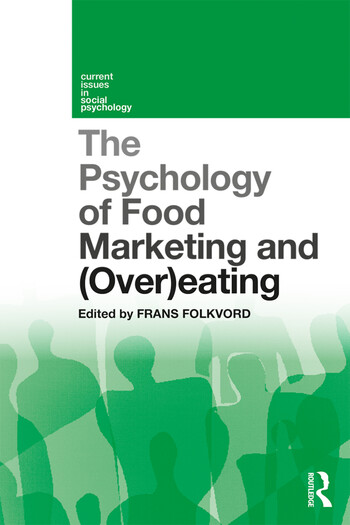Consumers Seek Restaurant Meals at Home
Food delivery service is catching on as a hassle-free option

It appears the convenience of food delivery service is catching on as a hassle-free option with new research from Mintel revealing that 87% of Americans who use third-party food delivery services agree that it makes their lives easier, and nearly one third (31%) say they use these services at least twice a week.
Despite impressive usage among third-party food delivery consumers, the industry is still relatively new as only 12% of Americans say that they have used a third-party delivery service in the past three months. Among non-users, three in 10 (30%) say that they would rather order delivery directly from the restaurant itself, citing concerns over price, as more than one quarter (27%) believe that delivery fees are too high. What’s more, some 23% of non-users say they live in an area where these companies do not operate.
Another barrier Mintel research highlights is that many Americans crave the experience of actually going to a restaurant: 28% of those who haven’t used a third-party delivery service say that they prefer to eat at a restaurant. Consequently, more than two thirds (65%) of restaurant delivery users agree that it’s more fun going to a restaurant than ordering in.
“Restaurant delivery is a hot market right now with many companies vying for the top spots. While usage today is low, it is important to note that the third-party delivery industry is still relatively new and low usage is to be expected, but it presents opportunity for growth. Those who do use these services tend to be Millennial men living in urban areas, indicating a need for these companies to attract a more diverse consumer base. Delivery cannot compete with the entire restaurant experience, but third-party companies can work at increasing the incidence of restaurant delivery by highlighting the benefits of having food delivered directly to the consumer,” said Caleb Bryant, Foodservice Analyst at Mintel.
Americans who have not used a third-party restaurant delivery service say fast delivery (31%), restaurant selection (28%), low order minimums (27%) and first-use coupons (26%) would motivate them to try it. However, there may be no convincing the older generations, as more than half (53%) of non-users age 55+ say nothing would motivate them to use these services, compared to 11% of non-users aged 18-24 and one third (33%) of non-users overall.
Despite hesitation from some non-users, restaurant delivery users tend to have positive perceptions surrounding delivered foods as two thirds (63%) agree that it is more convenient to get delivery than dining out with a family. What’s more, three in five (61%) consumers say that restaurant delivery apps are easy to use, while over one third (34%) believe restaurant delivery is faster than picking up food themselves.
“Older consumers tend to dine out less frequently than other age groups. As such, these consumers may view going out to eat as a more special occasion, not as something to just have at home, while younger consumers tend to be very open to at least trying restaurant delivery services. Third-party restaurant delivery services must assuage consumer doubts and concerns over delivery by convincing them that online and mobile delivery are faster, more convenient options, and by offering deals and incentives to encourage trial. Additionally, as smartphone ownership has almost peaked, restaurant delivery companies must create apps that are easy to use and standout in app stores crowded with competing offerings,” continued Bryant.
Mintel research reveals that “dinner and a movie” is taking an untraditional spin as two in five (41%) consumers, including well over half (57%) of Millennials, say that they have restaurant food delivered so they can watch movies and TV shows at home. Adding to the perceived convenience factor of food delivery, the leading reason restaurant delivery consumers have restaurant food delivered is so they don’t have to leave their home (56%). While some 39% of restaurant delivery users say that food delivery services allow them to enjoy restaurant-quality food at home, nearly three quarters (74%) agree that more chain restaurants should offer delivery, indicating potential future growth in the segment.
“While there’s no denying that Americans enjoy the dining out experience, we’re finding that more and more consumers want to enjoy their favorite restaurant meal in the comfort of their own home. This is creating opportunity for restaurants to offer delivery services or partner with a third-party provider. There may also be a marketing opportunity for third-party restaurant delivery companies to cross-promote with entertainment companies to engage those consumers who enjoy eating restaurant quality food in front of the TV. The key to expanding delivery services lies in addressing some of the top concerns among consumers, namely price, while also leveraging the existing positive feelings and perceived benefits of delivery to keep current customers engaged,” concluded Bryant.
Despite impressive usage among third-party food delivery consumers, the industry is still relatively new as only 12% of Americans say that they have used a third-party delivery service in the past three months. Among non-users, three in 10 (30%) say that they would rather order delivery directly from the restaurant itself, citing concerns over price, as more than one quarter (27%) believe that delivery fees are too high. What’s more, some 23% of non-users say they live in an area where these companies do not operate.
Another barrier Mintel research highlights is that many Americans crave the experience of actually going to a restaurant: 28% of those who haven’t used a third-party delivery service say that they prefer to eat at a restaurant. Consequently, more than two thirds (65%) of restaurant delivery users agree that it’s more fun going to a restaurant than ordering in.
“Restaurant delivery is a hot market right now with many companies vying for the top spots. While usage today is low, it is important to note that the third-party delivery industry is still relatively new and low usage is to be expected, but it presents opportunity for growth. Those who do use these services tend to be Millennial men living in urban areas, indicating a need for these companies to attract a more diverse consumer base. Delivery cannot compete with the entire restaurant experience, but third-party companies can work at increasing the incidence of restaurant delivery by highlighting the benefits of having food delivered directly to the consumer,” said Caleb Bryant, Foodservice Analyst at Mintel.
Americans who have not used a third-party restaurant delivery service say fast delivery (31%), restaurant selection (28%), low order minimums (27%) and first-use coupons (26%) would motivate them to try it. However, there may be no convincing the older generations, as more than half (53%) of non-users age 55+ say nothing would motivate them to use these services, compared to 11% of non-users aged 18-24 and one third (33%) of non-users overall.
Despite hesitation from some non-users, restaurant delivery users tend to have positive perceptions surrounding delivered foods as two thirds (63%) agree that it is more convenient to get delivery than dining out with a family. What’s more, three in five (61%) consumers say that restaurant delivery apps are easy to use, while over one third (34%) believe restaurant delivery is faster than picking up food themselves.
“Older consumers tend to dine out less frequently than other age groups. As such, these consumers may view going out to eat as a more special occasion, not as something to just have at home, while younger consumers tend to be very open to at least trying restaurant delivery services. Third-party restaurant delivery services must assuage consumer doubts and concerns over delivery by convincing them that online and mobile delivery are faster, more convenient options, and by offering deals and incentives to encourage trial. Additionally, as smartphone ownership has almost peaked, restaurant delivery companies must create apps that are easy to use and standout in app stores crowded with competing offerings,” continued Bryant.
Mintel research reveals that “dinner and a movie” is taking an untraditional spin as two in five (41%) consumers, including well over half (57%) of Millennials, say that they have restaurant food delivered so they can watch movies and TV shows at home. Adding to the perceived convenience factor of food delivery, the leading reason restaurant delivery consumers have restaurant food delivered is so they don’t have to leave their home (56%). While some 39% of restaurant delivery users say that food delivery services allow them to enjoy restaurant-quality food at home, nearly three quarters (74%) agree that more chain restaurants should offer delivery, indicating potential future growth in the segment.
“While there’s no denying that Americans enjoy the dining out experience, we’re finding that more and more consumers want to enjoy their favorite restaurant meal in the comfort of their own home. This is creating opportunity for restaurants to offer delivery services or partner with a third-party provider. There may also be a marketing opportunity for third-party restaurant delivery companies to cross-promote with entertainment companies to engage those consumers who enjoy eating restaurant quality food in front of the TV. The key to expanding delivery services lies in addressing some of the top concerns among consumers, namely price, while also leveraging the existing positive feelings and perceived benefits of delivery to keep current customers engaged,” concluded Bryant.
Looking for a reprint of this article?
From high-res PDFs to custom plaques, order your copy today!








